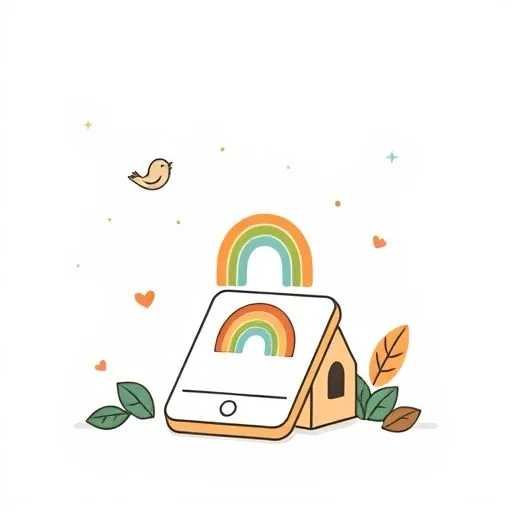
You know that moment—the dishwasher hums, leftovers are finally put away, and then comes a tiny voice holding a smart speaker: ‘Daddy, how does it know things?’ That sudden, quiet curiosity amidst the bedtime chaos? That’s where the magic lives. We’ve all felt that subtle tension—wanting to nurture their wonder while worrying about screen-time rabbit holes. But what if these devices became campfire-like gathering spots? Places where ‘Hey Google’ transforms into ‘Let’s explore this together.’ It’s about finding that sweet spot where privacy meets playful discovery, and it’s simpler than you think.
From Device to Discovery Partner

Our kitchen speaker became a teacher when one of the kids asked why it couldn’t taste their cookies. Instead of reciting specs, we turned it into game night. ‘What things CAN it understand?’ I asked. We spent twenty glorious minutes testing silly commands—does it know frog sounds? Can it count backward while hopping? That ‘aha’ moment when they realized it combines math AND jokes? Priceless. The secret sauce? Three simple words: ‘Let’s investigate together.’ Suddenly, the black box device becomes a team project. We found a simple diagram of voice recognition—no Ph.D. needed—just a visual showing sound waves turning into data. That young mind grasped that someone had to TEACH it jokes, just like Grandma taught them clapping games. That humble speaker became our modern microscope, revealing invisible worlds through shared curiosity.
The real win came when a little voice caught me asking it work questions. ‘Daddy, shouldn’t WE try figuring that out first?’ they whispered. Outsmarted by a child half my size, appreciating the journey. Now we use AI like a shared flashlight—illuminating paths, not walking them for us.
When it says ‘I don’t know,’ we cheer. It just means there’s another mystery to solve together.
Privacy as Playtime Protection

My partner raised an eyebrow when I suggested letting the kids interrogate Alexa. ‘You trust that thing?’ Her protective instincts spot risks I might overlook. Together, we dove into the settings like digital archaeologists. And we found gold: most devices now keep kids’ requests locally until you give permission for the cloud. We turned data storage into a teachable moment—comparing it to library cards tracking borrowed books. ‘See? It only remembers if we say it’s okay.’ Customized commands became safety drills: ‘Computer, delete today!’ followed by goofy farewell waves. The surprise benefit? They internalized digital boundaries faster than any lecture. Now they police my phone use at dinner—’Daddy, close the cloud now!’
We treat privacy settings like playground rules—visible fences letting imaginations sprint freely inside. The kids know some gardens stay locked (location data) while others bloom openly (weather queries). My partner’s genius move? Linking privacy to community trust. ‘Just like we don’t shout personal stuff in the park,’ she told them, ‘we protect our digital backyard.’ Their latest game is inventing nonsense words to ‘trick’ the devices—a hilarious lesson in encryption.
When Tech Meets Tangible Magic

After weeks of rain, the kids begged our speaker for sunshine. Instead of just giving forecasts, it suggested DIY experiments—like making indoor rainbows. Cue flashlight-and-prism missions across foggy windows—total chaos but so much fun! Later, it helped identify backyard weeds we turned into ‘dinosaur salads.’ That’s when it clicked—AI sparks the most joy when it inspires physical world adventures. Like last weekend’s quest: ‘What’s that bird?’ led to building a recycled-materials feeder. The device sourced the plans while tiny hands taped toilet paper tubes together. Now? Our creation wobbles outside, charmingly imperfect but wholly theirs.
We balance screen moments with ‘now go touch grass’ missions. The speaker picks nature sounds; they hunt for the matching actual crickets in the yard. They found 23 before bedtime—a new family record. The genius is making tech a launchpad, not the destination. We use it for recipe suggestions that spark flour-dusted kitchen chaos, or for translating funny phrases to send to pen pals. It all ties back to analog play.
Because sunshine tastes best offline—even if tech helped plan the picnic.
Speaking of innovation, even major tech companies like Nothing are investing heavily in making tech more human-centric (Source: The Irish Times, 2025-09-16).
